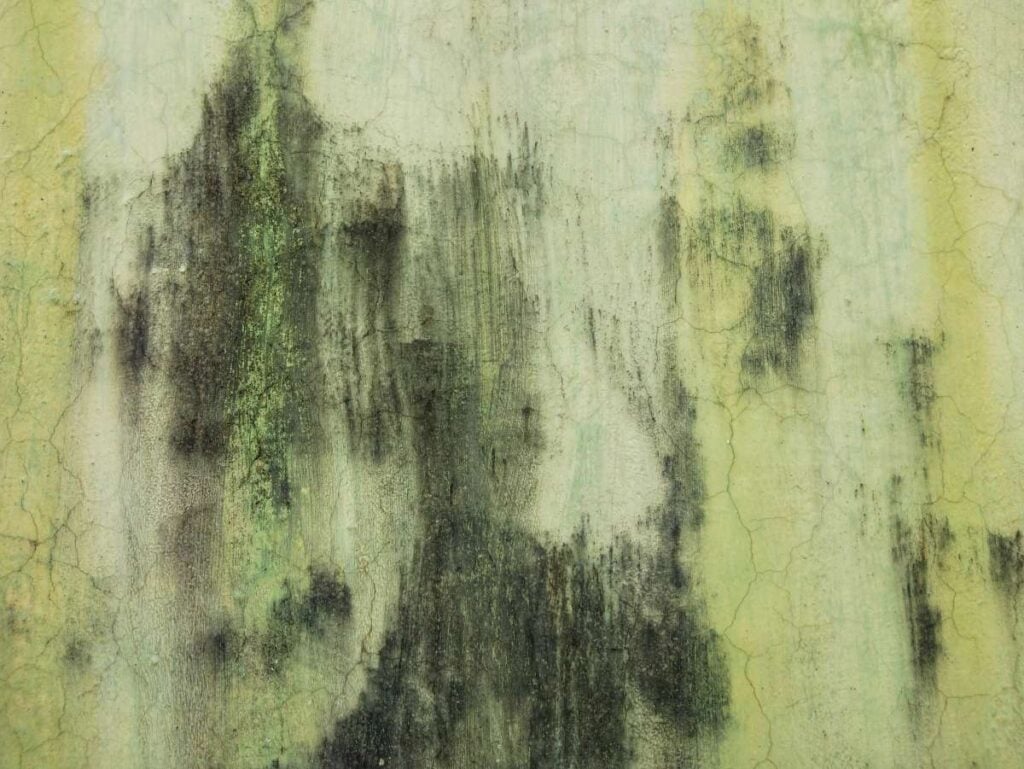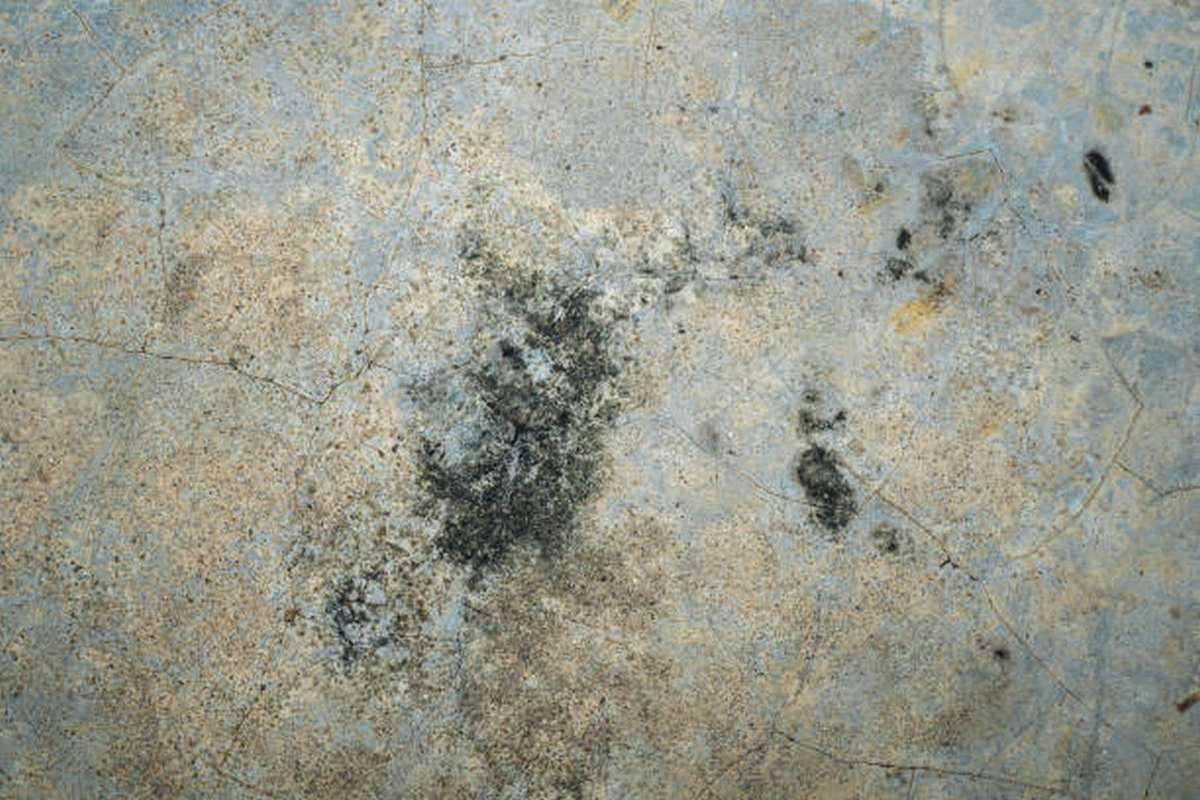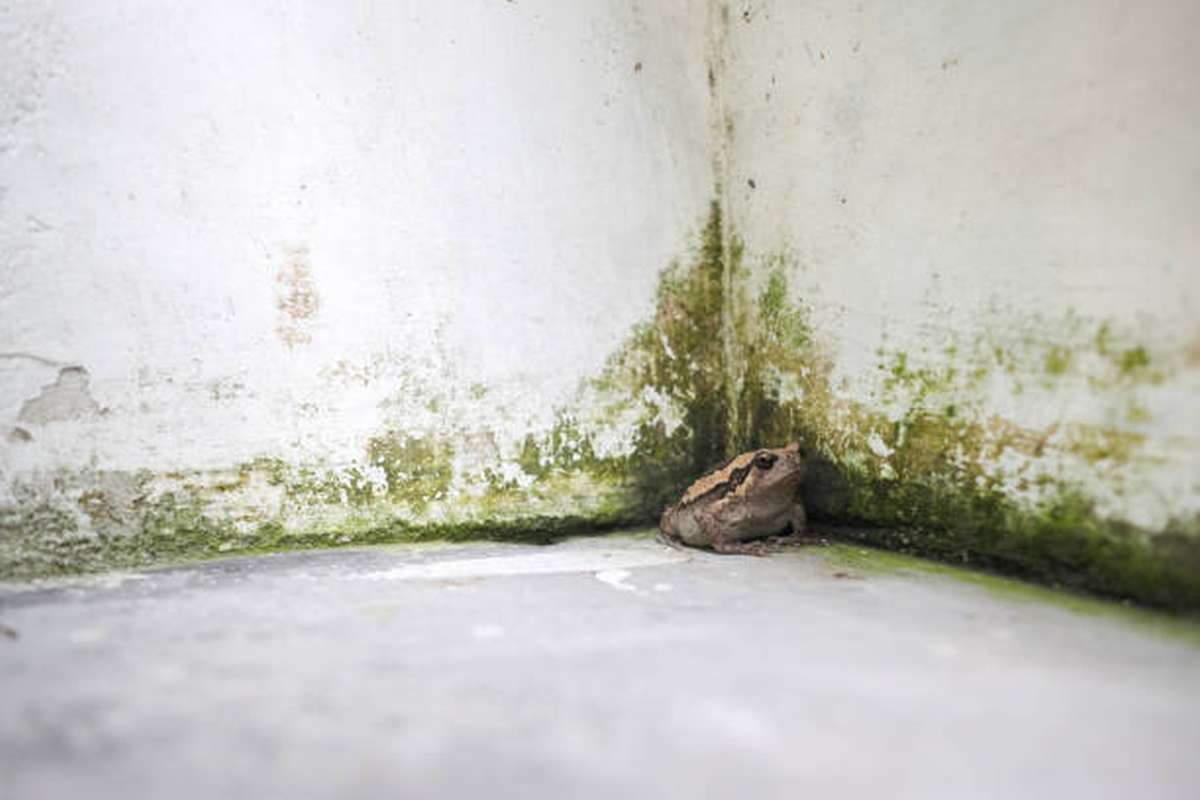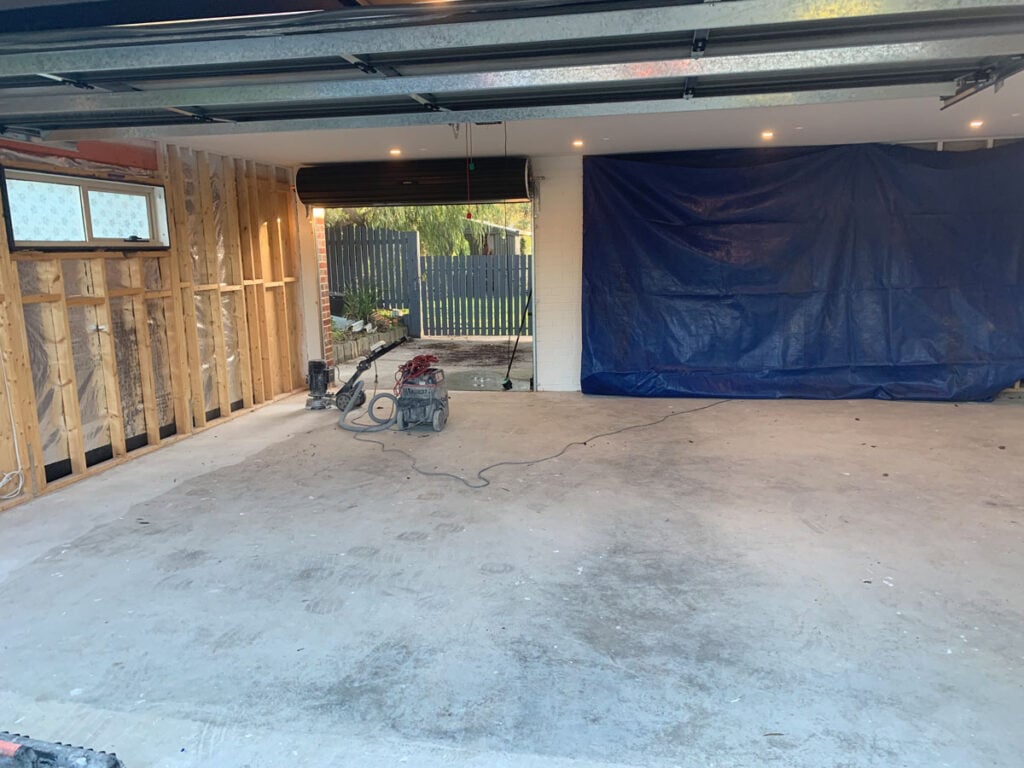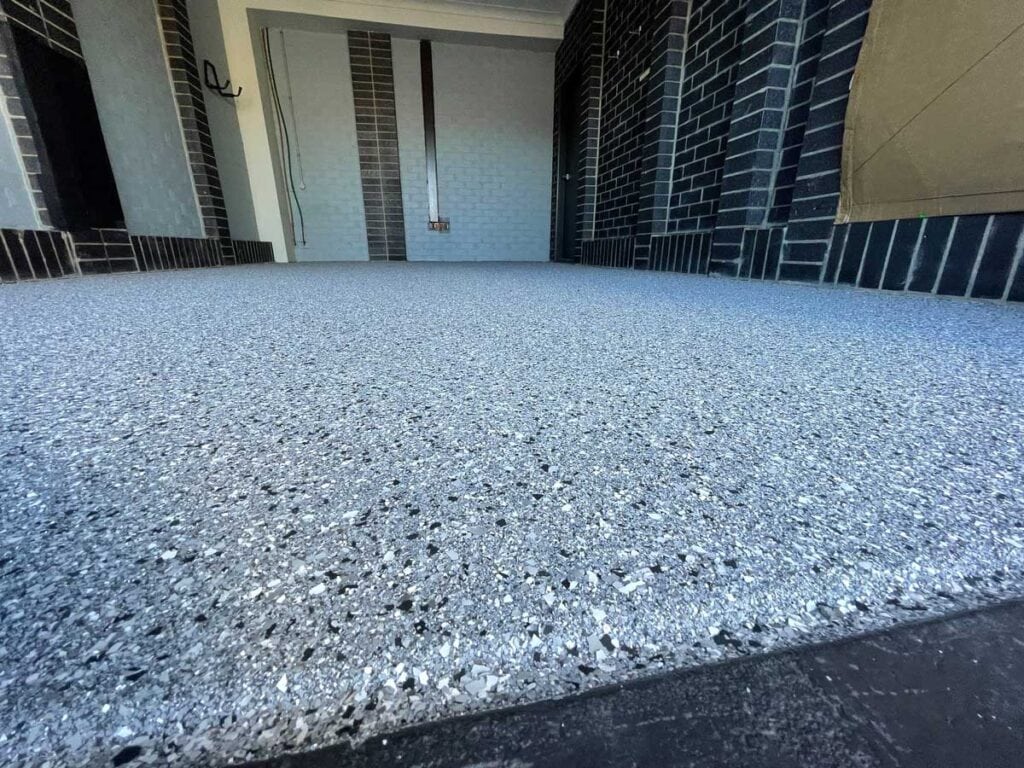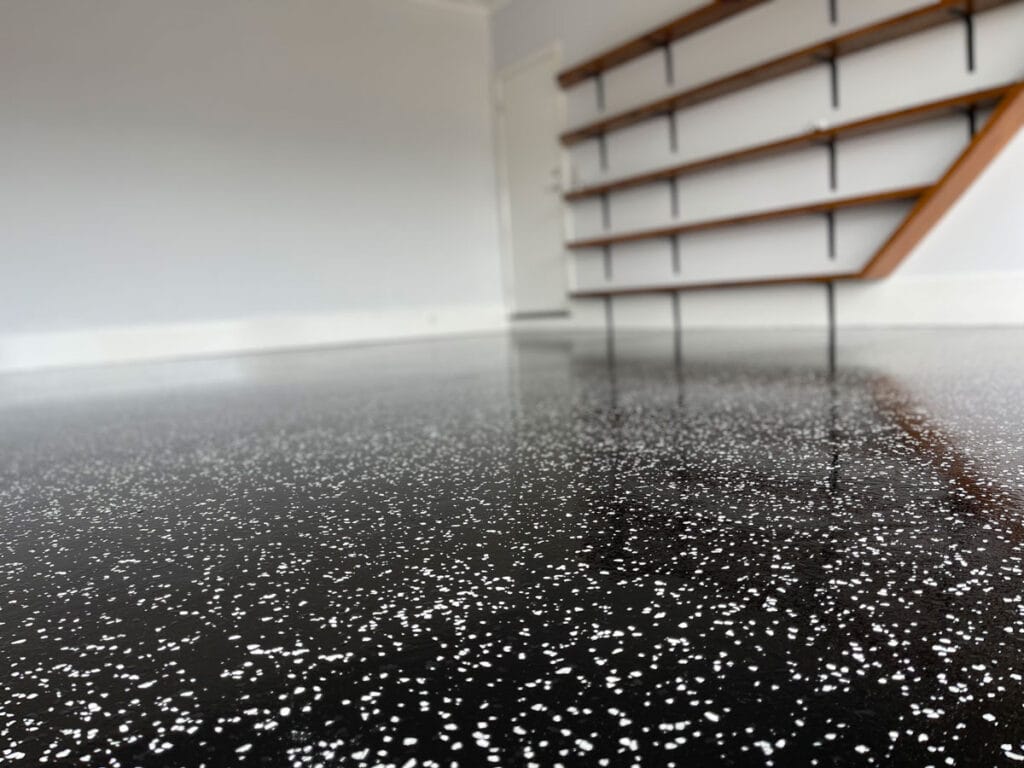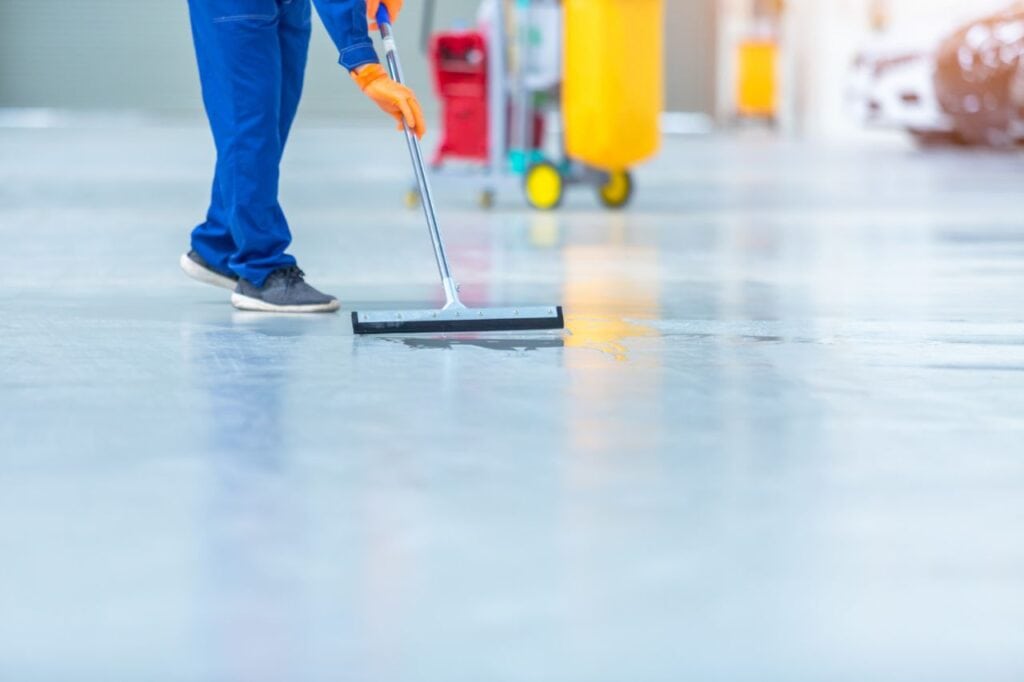Concrete is a popular building material due to its long lifespan, high strength, and adaptability. Structures, bridges, streets, and walkways all make use of it regularly. Despite its durability, concrete is not totally proof against the impacts of the environment, such as mould growth.
Fungi like mould grow rapidly in damp, humid places with enough of organic material to feed on. Even though concrete isn't something mould can eat, it can be a great place for it to thrive if the conditions are right. This article will discuss what encourages mould growth on concrete, what dangers it may pose, and how to prevent and fix problems caused by mould.
Homeowners, builders, and maintainers of concrete structures would do well to familiarise themselves with the conditions under which mould can grow on the material. We hope that by increasing awareness of this issue, we may assist in reducing the likelihood of mould formation, so protecting the structural soundness and public health of concrete surfaces.
To learn more about mould and its interaction with concrete, including what causes it to flourish and how to stop it, we invite you to join us in this investigation. By learning more about the causes at play, we can make better judgements and take preventative measures to ensure that concrete structures last as long as possible and continue to be of high quality.
Mould Growth in Concrete
Mould growth is a major danger to the durability of concrete because it leads to the formation of acid, which dissolves the cement. Mould may not be able to develop on the concrete itself, but it can thrive in environments with plenty of water, algae, bacteria, salts, dust, pollen, filth, and even dead skin. Mould growth reduces the strength of concrete and makes it more porous, making it easier for water, bacteria, and dust to penetrate the material, even in the absence of cracks.
Minimising Mould Growth during Construction:
Utilising Protective Barriers and Water-Resistant Materials:
During the construction phase, it is crucial to implement protective barriers and use water-resistant materials to minimise the risk of water damage and mould growth. These measures act as a safeguard against moisture infiltration, ensuring the structural integrity of the concrete.
Employing Temporary Humidity Control Solutions:
To prevent water damage and the subsequent growth of mould, temporary humidity control solutions should be employed. Natural ventilation, when weather conditions are favourable, aids in drying wet construction materials. However, additional measures such as dehumidifiers and temperature controls may be necessary to maintain optimal conditions during unfavourable weather.
Proper Sequencing of Construction Activities:
Sequencing construction activities correctly is essential to avoid potential mould growth. It is advisable to avoid the installation of drywall near or on wet concrete. This precaution prevents the entrapment of moisture, creating an environment conducive to mould development.
What Causes Mould to Grow?
Mould is a natural component of the environment and plays a role in decomposing organic matter and facilitating new growth. In natural settings, mould tends to thrive in the presence of organic substances such as decaying trees, animal remains, and decomposing plants. While concrete may not seem suitable for mould growth, it does contain a small amount of organic material that can support mould growth under the right conditions. Climate and moisture can create an environment where mould can spread and thrive, even on concrete surfaces.
Why This Is Important
Mould is a crucial component of the natural ecosystem as it aids in decomposing organic matter. Numerous types of mould can settle on various surfaces, including the ground, objects, dead trees, and building surfaces. Mould requires oxygen and temperatures ranging from 40 to 120 degrees Fahrenheit to thrive, while it becomes dormant in colder temperatures. While mould serves a beneficial role in the environment, it can also pose health risks to individuals, necessitating proper remediation. Moreover, mould growth on concrete can lead to structural problems that must be addressed.
Mould Grows Inside Of Concrete Too
Despite its flat and dense appearance, concrete is actually a porous material. Mould spores can reside on the surface of concrete and penetrate deep into its pores.
Certain types of mould produce acid, which can deteriorate the concrete over time, compromising its strength and durability. As mould breaks down the concrete, it becomes even more porous, creating additional areas for mould to spread.
Mould thrives on moisture, bacteria, salts, dust, pollen, dirt, and other organic materials commonly found on the surface of concrete. This is why mould growth typically starts on the surface rather than the interior. Internal mould growth can be prevented by effectively managing surface conditions and addressing moisture issues.
In some cases, mould can grow inside concrete without initially appearing on the surface. This usually occurs within deep cracks where moisture and organic matter accumulate. If there are moist and organic-rich conditions within deep cracks, mould can grow inside the concrete, undetectable from the surface. Therefore, mould on the surface may not necessarily indicate that it is only starting to grow; it could have been developing beneath the surface for an extended period.
Proper ventilation plays a vital role in preventing mould growth by facilitating the drying of wet materials. Basements, which tend to be warm, dark, and damp, provide an ideal environment for mould growth. By promoting airflow and eliminating dampness, mould is less likely to grow on or inside the concrete. That's why it is recommended to have proper ventilation in basements and crawlspaces.
To prevent mould growth, it is important to address deep cracks, maintain a dry surface, and apply a vapour barrier to seal the concrete from the outside. These measures help prevent mould growth both within and on the concrete.
Mould or Efflorescence
Mould can manifest in various colours, including black, white, and others. While black mould is relatively easy to identify, distinguishing between white mould and efflorescence can be more challenging.
Efflorescence refers to a crystalline growth that occurs when moisture moves through concrete. During this process, minerals present in the concrete are carried along with the water and are left behind as salts and minerals when the water evaporates.
One method to differentiate between white mould and efflorescence is to spray water on the surface. If the growth disappears upon contact with water, it is likely efflorescence rather than mould.
Humidity Causes Mold To Grow On Concrete
In crawl spaces or basements, two common causes of mould growth are high humidity and groundwater intrusion. While sealing the foundation can help prevent groundwater intrusion, it does not address the issue of high humidity.
It is crucial to control the relative humidity in these areas, particularly if proper ventilation is lacking. Mould can thrive when moisture in the air comes into contact with surfaces. It is a concerning sign if you notice water droplets accumulating on the walls of your basement or crawl space.
To prevent mould growth, it is recommended to maintain relative humidity levels below 60%. This can be achieved using dehumidifiers and fans to dry the concrete surfaces and promote airflow.
Main Cause: Groundwater Intrusion Moulds Concrete
Look at your home's exterior, specifically the foundation and basement area. Are there any noticeable cracks in the foundation? If you observe cracks, it is advisable to have a professional inspection conducted.
Pay attention to any signs of water pooling near your home. If you are experiencing mould issues in your basement, this could be a potential cause. Even if you haven't noticed mould yet, water accumulation is a warning sign that mould growth may occur in the future.
Ensure you have installed gutters to redirect water away from your house effectively. Downspouts can be installed to direct water flow 4-10 feet away from the home, reducing the risk of water seepage.
Observe the ground around your home. Does it appear level? If not, grade the ground so it slopes away from your home rather than towards it. The objective is to keep water away from the concrete foundation of your home. If water seeps into the home and combines with moisture, it creates an environment conducive to mould growth.
How to Remove Mold Growth
Understanding the severity of mould growth is crucial, as it poses risks to both human health and the structural integrity of homes. Mould can spread and deteriorate materials such as concrete foundations and crawl spaces. If left uncontrolled, it can lead to significant health problems and weaken concrete surfaces to the point where they can no longer bear weight.
Removing mould can be straightforward unless the affected area is extensive. In such cases, it is advisable to seek assistance from a local professional for proper mould removal. However, if the mould-affected area is relatively small, there is a do-it-yourself approach you can follow to address the problem.
Start by scrubbing the area with a fungicide, as this alone may be sufficient to eliminate the mould. Utilise a HEPA vacuum to remove any excess mould and debris that may have accumulated. More intensive methods like sandblasting or steam cleaning might be necessary in certain situations. It's important to note that even after a thorough cleaning, a coloured spot may remain on the wall. However, this is merely a residue of the mould's prior presence, and the mould itself has been effectively removed.
Preventing Mold On Concrete
Preventing mould growth on and in concrete can be achieved by effectively controlling temperature and relative humidity levels. Here are some important measures to consider:
- Maintain a relative humidity below 60 per cent, with the ideal range between 30 and 50 per cent. Use a hygrometer to monitor humidity levels and take necessary steps to reduce moisture in the air.
- Ensure proper ventilation in the area. Use exhaust fans to improve air circulation and remove excess moisture. Consider installing a dehumidifier to extract moisture from the air, keeping the concrete surfaces dry.
- Promptly address and eliminate any standing water or moisture sources. Repair any leaks in pipes or plumbing systems and prevent water accumulation around the concrete areas.
- Seal the foundation to prevent water intrusion. Properly waterproofing the concrete can help minimise the risk of moisture seeping into the structure.
- Regularly clean the concrete surfaces and remove any accumulated debris or organic material that may serve as a food source for mould. HEPA air filters can also help capture airborne mould spores and prevent their proliferation.
By implementing these preventive measures and maintaining a controlled environment, you can significantly reduce the chances of mould growth on and in concrete surfaces.
When to Call an Expert
If you require assistance with mould on concrete and identifying its source, it is recommended to seek professional help. A professional can accurately assess the situation, provide guidance, suggest appropriate treatments or refer you to specialists. Professionals are equipped to handle the situation effectively for larger areas affected by mould.
Conclusion
Because of its durability, strength, and versatility, concrete is a widely used construction material. Mould growth, however, can flourish in wet and humid environments if there is sufficient organic material available. Why mould grows on concrete, the potential health risks it poses, and prevention and repair methods are all topics we'll cover here. Mould growth weakens the concrete and makes it more porous so that moisture, bacteria, and dust have an easier time seeping in. In order to prevent water damage and the subsequent growth of mould, it is important to utilise water-resistant materials and protective barriers during construction.
To stop water seepage and mould growth, use temporary humidity control solutions. Avoiding mould formation requires careful planning of the construction schedule. Mould multiplies rapidly in environments with lots of dead vegetation, rotting wood, or dead animals. It can only survive in oxygen-rich environments with temperatures between 40 and 120 degrees Fahrenheit, going dormant below 40 degrees. Mould can also form within concrete, therefore, it's important to take care of the surface and any moisture problems you may have.
Proper ventilation is necessary to prevent the growth of mould inside the concrete, which may not show any outward signs of development at first. Dealing with severe cracks, keeping the surface dry, and using a vapour barrier to seal the concrete from the outside are all crucial. When water penetrates concrete, a crystalline growth known as efflorescence forms. Mould in basements and crawlspaces usually develops because of excessive humidity or groundwater seepage. Keep the relative humidity in your home or building below 60% if you want to avoid mould growth.
Keep an eye out for mould as you stroll around the exterior of your home. Put in gutters to collect rainwater and grade the yard so that water flows away from the house's concrete base. Scrub the area with a fungicide and then vacuum it up using a HEPA filter to get rid of the mould. Keeping the concrete at an appropriate temperature and relative humidity will keep mould at bay. Keep the relative humidity below 60% by using a hygrometer to track the moisture in the air, opening windows and doors, running exhaust fans, installing a dehumidifier, fixing any leaks or other sources of standing water, sealing the foundation, cleaning the concrete, and using HEPA air filters to remove mould spores from the air. If you notice mould on your concrete, don't try to fix it on your own.
Content Summary
- Concrete, a durable building material, can still be susceptible to mould growth.
- Mould thrives in damp, humid environments with organic material.
- Increased awareness can reduce the likelihood of mould formation.
- Mould growth leads to acid formation, which can dissolve cement.
- Concrete's porosity allows mould spores to penetrate and spread.
- Minimising mould growth during construction requires protective barriers and water-resistant materials.
- Temporary humidity control solutions are necessary to prevent water damage.
- Proper sequencing of construction activities helps prevent mould growth.
- Climate and moisture create conditions for mould growth on concrete surfaces.
- Mould growth weakens the concrete and increases its porosity.
- Mould can grow inside the concrete, even without appearing on the surface.
- Proper ventilation is crucial to prevent mould growth in basements and crawlspaces.
- Deep cracks and moisture issues should be addressed to prevent mould growth.
- Efflorescence, a crystalline growth, can be mistaken for white mould.
- High humidity and groundwater intrusion are common causes of mould growth.
- Relative humidity levels should be maintained below 60% to prevent mould growth.
- Cracks in the foundation and water accumulation near the home can lead to mould issues.
- Gutters and proper grading help redirect water away from the foundation.
- Mould removal may require professional assistance for extensive areas.
- Scrubbing with a fungicide and using a HEPA vacuum can help remove mould.
- Controlling temperature and humidity levels prevents mould growth on concrete.
- Proper ventilation and dehumidifiers aid in moisture reduction.
- Promptly addressing and eliminating moisture sources is crucial.
- Sealing the foundation helps prevent water intrusion.
- Regular cleaning and removing organic material minimise mould's food source.
- Monitoring humidity levels and using HEPA air filters can prevent mould proliferation.
- Seek professional help for mould issues on concrete and identifying sources.
- Professionals can provide accurate assessments and effective treatments.
- Implementing preventive measures reduces the chances of mould growth.
- Awareness and action can protect both human health and the structural integrity of homes.
Frequently Asked Questions
While mould only feeds on organic materials, it can grow on any surface, especially concrete. While concrete may not supply abundant organic material, it provides just enough mould to spread to other building areas.
Mould might look like black spots or areas that have turned green. Some mould is white but can be confused with efflorescence, a salty concrete film. If the white substance dissolves easily with water, it is likely the latter.
The acid moulds can degrade concrete, compromising its strength and integrity. While mould may not find enough nourishment in concrete alone, it can feed on moisture, algae, bacteria, salts, dust, pollen, dirt, dead skin, and other particles trapped within it.
Mould growths, or colonies, can start to grow on a damp surface within 24 to 48 hours. They reproduce by spores - tiny, lightweight "seeds"- that travel through the air.
Exposure to damp and mouldy environments may cause various health effects or none at all. Some people are sensitive to moulds. For these people, exposure to moulds can lead to symptoms such as stuffy nose, wheezing, and red or itchy eyes or skin.
